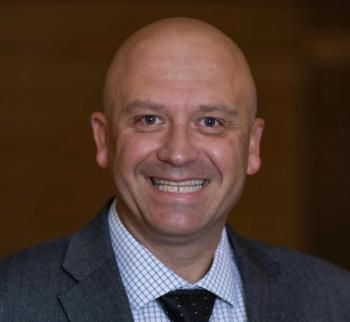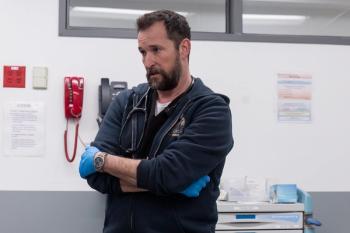
Looking at better data and cooperation to improve public health | Data Book podcast
J.T. Lane of the Association of State and Territorial Health Officials talks about sharing information, working with the private sector and preparing for future threats.
J.T. Lane says there needs to be a better exchange of data, and more cooperation, between public health systems and the healthcare industry.
Lane is the senior vice president of population health and innovation for the Association of State and Territorial Health Officials. He talked about the need for better data, public health challenges, and working with health providers in a conversation on the latest Data Book podcast from Chief Healthcare Executive®.
“I think that we have recognized that the public health data ecosystem across the U.S. has not been adequately resourced, managed and planned, for a while now,” Lane says. “We recognized this even before the pandemic.”
Lane talks about important lessons that have emerged from the COVID-19 pandemic, and some important issues to be addressed in terms of sharing information.
“Whether you're dealing with lab reporting, lab results, reporting or case reporting, or birth and death data, these data streams were operating in different systems and silos,” Lane says.
He says there has been progress. And the association is working to improve the sharing of such data between state agencies.
“This is a complex challenge, and it's an exciting challenge to take on,” Lane says. “It's the first time we're modernizing and sort of reforming our public health data ecosystem between the federal, state and local governments of the U.S. states and territories. One thing we knew that we had to do is sort of break down those data silos.”
Lane points to the need for better collaboration between public health agencies and the healthcare industry.
“Public health, I think, and healthcare need to come together more closely,” Lane says. “I think that one being in the public sector, one being in the private sector, has led to just natural cultural distance and between the two, in ways that didn't recognize the real business reality that we depend upon each other.”
“We want to be able to use that data to make effective policy to make sure that we keep as many people out of the ER and in the appropriate setting of care, so that everyone is sort of winning from this,” he adds. “And then frankly, if people are healthier, the economy's typically better. They show up to work more often, less kids are out sick from school, things like that.”
At least a third of the data public health agencies analyze to make decisions during a crisis comes from healthcare providers, he says.
“Public health is worried about the populations and health of every member of the community,” Lane says. “And we depend on a lot of data from healthcare to be able to monitor that effectively.”
Lane says public health agencies have made progress since the pandemic, but there is still more work to do to be ready for the next pandemic or public health threat.
He says he’d like to see state health agencies working in a collective direction that allows for more cohesion, while still preserving the role of states in deploying their own public health actions.
“It's a complex challenge,” Lane says. “I think it's certainly one we're up for. It's going to require us all to do things different going forward.”
Lane is also worried about having enough workers in public health.
“We're concerned about the public health workforce and not having enough people in the field and boots on the ground,” Lane says. “We know the workforce has shrunk. And we're focused on expanding that further.”
“Right now, all of our jurisdictions, we share equal concern about the sustainability of the healthcare workforce itself as well nationwide, everywhere from having enough nurses in urban and rural settings, to having enough physicians in many rural communities across the country,” he adds.




























































































